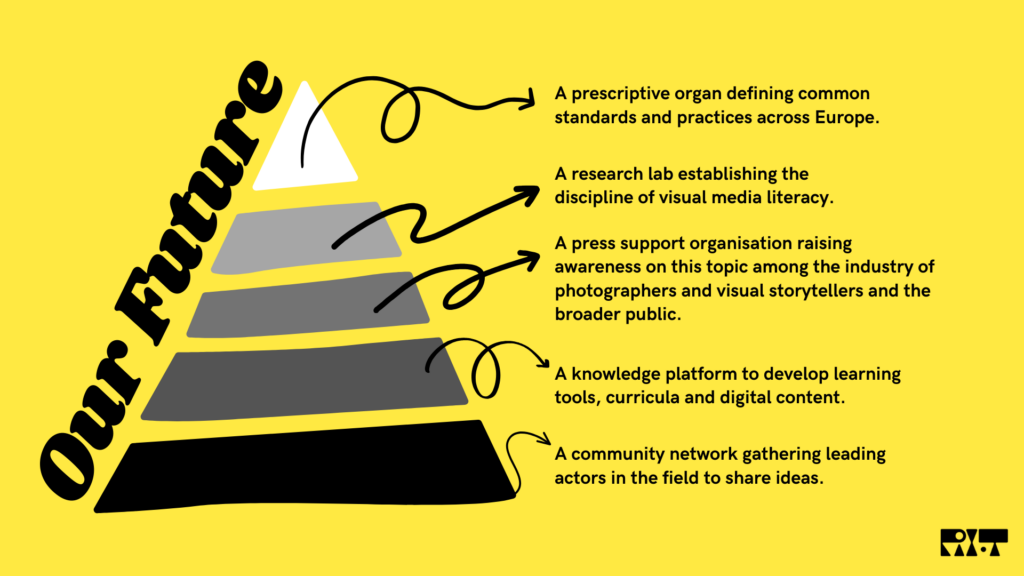The Pix.T project has always been deeply committed to tackling the complex educational and cultural challenge of fostering a responsible and informed engagement with visual media, a particularly pressing challenge in an age shaped by echo chambers and advanced generative AI. As stated under Point #7 “Collaboration & Education” of our Manifesto: “Professionals have both a key role to play and much to gain by sharing knowledge about the place of images in society, and the ethics and economics necessary to sustain the medium.”
We are compelled by the urgency to confront this challenge head-on through the emerging field of Visual Media Literacy — whereby Pix.T becomes a central player in expanding the knowledge base and tools of diffusion at both professional and societal levels.
What is Visual Media Literacy? The European Commission defines Media Literacy as encompassing all the “technical, cognitive, social, civic, and creative capacities that enable a citizen to access, critically understand, and interact with the media.” UNESCO adds that “there is no single notion of literacy which people possess or not, but multiple literacies. Thus, literacy becomes situational, pluralistic, and dynamic.” Visual literacy, in particular, refers to the ability to read, interpret, understand, and work with images and image-based media. Unlike other forms of literacy, such as reading, writing, and mathematics, the skills of “seeing” and “interpreting” images are often assumed to be innate. As a result, they are rarely taught in schools and are frequently overlooked in media and information literacy (MIL) curricula. Digital literacy, on the other hand, involves the ability to access, understand, create, and share information safely and effectively through digital technologies.
The rapid and often uncontrolled development of Artificial Intelligence is forcing the media industry to confront some of the greatest challenges in its history: the erosion of credibility in traditional media outlets, the proliferation of fake news and doctored images, and a decline in the quality of democratic discourse all go hand in hand. Compounding these challenges is the shift in social media platforms: as Facebook wanes in popularity, video-centric networks like TikTok are gaining prominence, even for news consumption. This trend reflects the media consumption habits of younger generations, for whom visual content on social media has become an integral part of their everyday news diet: a recent study found that TikTok now reaches 44% of 18- to 24-year-olds across markets, with 20% reporting that they use the platform to get informed. This trend is expected to grow in the coming years.
It is increasingly evident that we must equip ourselves with practical tools and frameworks to navigate these times responsibly and thoughtfully. At the intersection of the fields described above lies a vital, yet still underexplored, area of expertise: Visual Media Literacy. This emerging discipline addresses the unique challenges posed by how visual media — such as photos and videos — affects audiences, particularly on social platforms. It also focuses on equipping citizens with the skills and knowledge to critically evaluate and engage with visual media in the 21st century.
At Pix.T, we believe that visual media literacy deserves recognition as a distinct subfield within media literacy—one specifically tailored to address new media trends and the societal and technological challenges we face today. This belief underpins the launch of this project, which we envision as a space to foster and spread this discipline amid the current challenges the media industry is facing. This project marks an initial step toward establishing visual media literacy as a recognized discipline, guided by a shared set of principles and practices, along with an evolving body of curricula. By embracing a multidisciplinary approach and collaborating with both academics and media professionals, our goal is to define the first common framework of standards and practices for visual media literacy in Europe.
To know more, download our full presentation here.
















